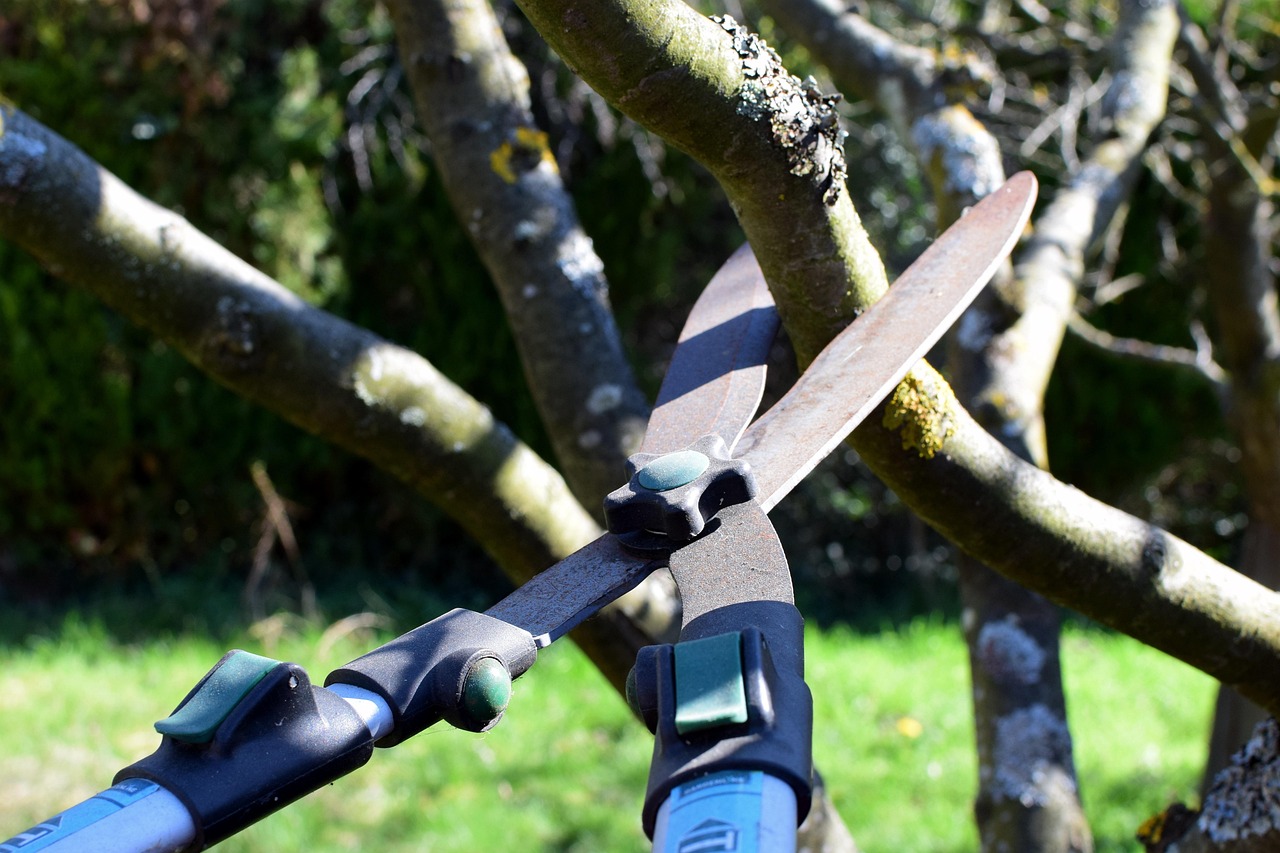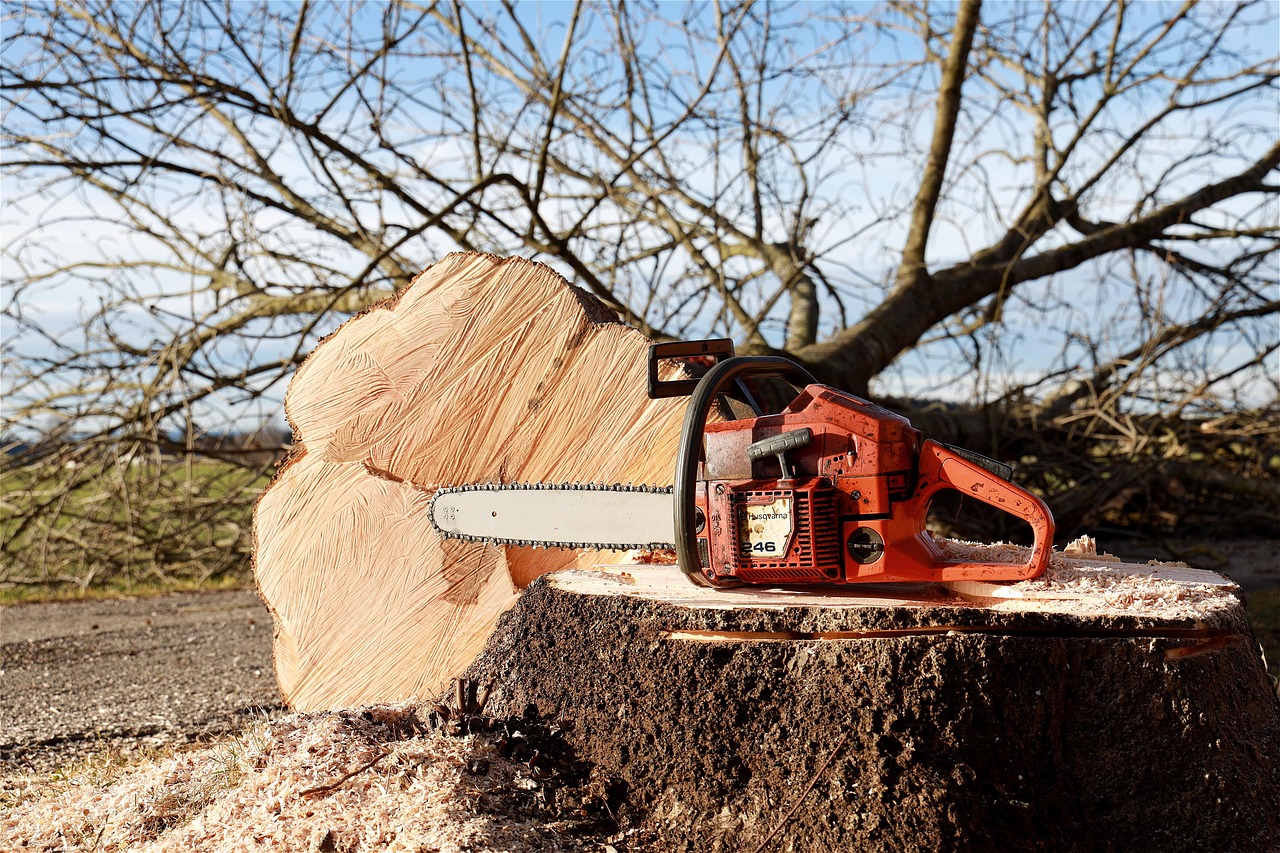Proper pruning of citrus trees is essential for maximizing fruit yield. This practice encourages healthy growth, improves air circulation, and enhances sunlight exposure, leading to better fruit production and overall tree vitality.
Citrus trees are beloved for their fragrant blossoms and delicious fruits. However, to achieve the best yield, understanding the art and science of pruning is critical. Pruning involves removing specific parts of the tree to promote healthy growth and fruit production. Correct pruning techniques can also help in managing the size of the tree, making it easier to harvest and care for.

The ideal time for pruning citrus trees is during late winter or early spring, just before the new growth begins. This timing allows the tree to recover quickly and encourages vigorous growth. However, light pruning can be done throughout the year if needed. Knowing when and how to prune your citrus trees can significantly impact their productivity.
Benefits of Pruning Citrus Trees
Pruning offers several benefits that directly contribute to maximizing fruit yield:
- Improved Air Circulation: Pruning opens up the canopy of the tree, allowing for better airflow. This reduces the risk of diseases caused by stagnant air and promotes healthier foliage.
- Enhanced Sunlight Exposure: Removing excess branches ensures that sunlight reaches all parts of the tree. Proper light exposure is essential for photosynthesis, which fuels fruit production.
- Better Fruit Quality: Pruned trees often produce larger and more flavorful fruits. By focusing the tree’s energy on fewer fruits, each fruit can grow to its full potential.
- Reduced Pest Issues: A well-pruned tree is less inviting to pests. By keeping the tree healthy, you decrease the likelihood of infestations that can harm fruit yield.
Understanding the types of cuts involved in pruning is also crucial. Each cut serves a specific purpose and contributes to the overall health of the tree. Below are common types of cuts used in pruning citrus trees:

| Type of Cut | Description |
|---|---|
| Heading Cut | This cut removes the tip of a branch, encouraging bushier growth. It helps in shaping the tree. |
| Thinning Cut | This cut removes entire branches or stems to improve light penetration and air circulation. |
| Reduction Cut | This cut shortens a branch while maintaining its structure. It directs growth to other areas of the tree. |
Before you begin pruning, gather the right tools. A sharp pair of pruning shears is essential for clean cuts. For larger branches, consider using loppers or a pruning saw. Keeping your tools clean will help prevent disease transfer between plants. It’s also important to wear gloves and safety goggles for protection.
Steps for Pruning Citrus Trees
Follow these steps for effective pruning of your citrus trees:
- Assess the Tree: Evaluate your tree’s structure and overall health. Identify any dead, damaged, or diseased branches that need removal.
- Remove Dead or Diseased Wood: Start by cutting away any branches that show signs of disease or damage. This helps prevent further spread.
- Thin Out Crowded Areas: Look for branches that cross each other or are too close together. Selectively remove some to improve airflow.
- Shape the Tree: Trim back any overly long branches to maintain a balanced shape. Aim for an open center to allow sunlight penetration.
- Focus on Young Growth: Encourage new growth by selectively cutting older branches. This promotes fruiting from younger wood.
After pruning, it’s important to monitor your citrus trees closely. Look for signs of new growth and check for any pests or diseases that may arise after you’ve made changes to the tree’s structure. Regular maintenance will ensure that your efforts yield the maximum amount of fruit.

By understanding when and how to prune citrus trees, you can significantly enhance their productivity and health. Taking these steps will set you on the right path toward enjoying bountiful harvests from your citrus garden.
Understanding Citrus Tree Growth Stages
To effectively prune citrus trees, it is important to understand their growth stages. Each stage has its own characteristics and requirements, which can influence how you approach pruning. By recognizing these stages, you can tailor your pruning techniques to maximize fruit yield.
1. Young Trees
In the early years, citrus trees are establishing their root systems and developing their structure. During this stage, the focus should be on shaping the tree and encouraging a strong framework.

- Establishing a Leader: Select a central leader to form the main trunk. This helps create a strong structure as the tree matures.
- Encouraging Branch Development: Prune to encourage lateral branch growth. This will help create a balanced canopy.
- Avoid Heavy Pruning: Limit pruning in the first few years to avoid stressing the young tree. Light shaping is ideal.
2. Mature Trees
Once the tree reaches maturity, typically around three to five years old, focus shifts towards optimizing fruit production and maintaining health.
- Removing Deadwood: Regularly inspect for dead or diseased branches and remove them to promote overall tree health.
- Thinning for Airflow: As branches become denser, thinning out excess growth becomes crucial for air circulation and sunlight exposure.
- Managing Size: Keep the tree at a manageable height for easier harvesting while maintaining fruit quality.
3. Fruiting Stage
The fruiting stage is when the tree produces flowers and fruit. Pruning during this time should be carefully timed to avoid disrupting fruit set.
- Timing is Key: Prune after fruit harvest but before new growth begins in spring for optimal results.
- Selectively Remove Old Fruit Spurs: This encourages new growth and fruit production while avoiding overcrowding.
- Focus on New Growth: Promote healthy new shoots, as they will produce the best quality fruit in the following season.
Tools Required for Pruning Citrus Trees
Using the right tools is essential for effective pruning. Proper tools will ensure clean cuts and reduce the risk of injury to both you and your tree. Here are some commonly used tools for pruning citrus trees:
| Tool | Description | Best Use |
|---|---|---|
| Hand Pruners | A small, hand-held tool for cutting branches up to ¾ inch thick. | Ideal for fine pruning and small branches. |
| Loppers | A larger tool with long handles for cutting branches up to 2 inches thick. | Used for thicker branches that are too large for hand pruners. |
| Pruning Saw | A saw designed for cutting larger branches that cannot be handled by loppers. | Effective for removing large limbs or dead branches. |
| Hedge Shears | A pair of long-bladed shears used for shaping and trimming foliage. | Useful for maintaining the overall shape of the tree. |
Common Mistakes in Citrus Tree Pruning
Citrus tree pruning can be challenging. Here are some common mistakes to avoid:
- Pruning at the Wrong Time: Avoid pruning during late summer or fall, as this can stress the tree and reduce fruit yield.
- Over-Pruning: Removing too many branches can weaken the tree and reduce its ability to produce fruit.
- Ineffective Cuts: Making improper cuts can invite disease and pests. Always make cuts at a slight angle and just above a bud.
- Narrow Canopy: Failing to open up the canopy can lead to poor air circulation and fruit quality. Ensure there is space between branches.
By avoiding these mistakes, you can help your citrus trees thrive and maximize their productivity. Remember that each tree is unique, and adapting your pruning techniques based on individual needs will yield the best results.
As you become more familiar with your citrus trees and their growth patterns, your confidence in pruning will grow. This knowledge will empower you to cultivate healthy trees that produce abundant fruit each season.
Seasonal Considerations for Pruning Citrus Trees
The timing of pruning citrus trees is crucial for their growth and fruit production. Each season presents unique opportunities and challenges. Understanding these seasonal factors will help you make informed decisions about when to prune.
Winter Pruning
Winter is an ideal time for pruning citrus trees. During this dormant period, the trees conserve energy, making it easier for them to recover from pruning. Here are some key points to consider:
- Timing: Aim to prune in late winter, just before new growth begins. This allows the tree to heal quickly as it enters its active growth phase.
- Focus on Structure: Use this time to shape the tree and remove any dead or diseased wood. This helps maintain a healthy structure for future growth.
- Preventing Winter Damage: Ensure that the tree is not over-pruned. A healthy canopy can provide protection against cold temperatures and frost damage.
Spring Pruning
Spring is another important period for pruning citrus trees. As new growth emerges, careful pruning can enhance fruit production:
- Remove Suckers: Suckers are weak shoots that grow from the base of the tree or along the trunk. Removing them directs energy to fruit-producing branches.
- Encourage New Growth: Prune lightly to promote vigorous new growth. This is especially important for trees that have not produced well in previous seasons.
- Avoid Heavy Pruning: Avoid aggressive pruning during flowering and fruit set, as it can reduce yields. Focus on light thinning and shaping instead.
Summer Pruning
Summer pruning is less common, but it can be beneficial in certain situations:
- Selective Thinning: If branches become too crowded, summer can be a good time to thin them out, allowing better air circulation and light penetration.
- Managing Size: If your tree has grown too large, light summer pruning can help control its size without disrupting fruit production.
- Avoid Stress: Be cautious not to stress the tree during hot months. Summer pruning can expose the tree to sunburn if too much foliage is removed.
Fall Pruning
Fall is generally not recommended for pruning citrus trees. However, there are some considerations:
- Avoid Late Pruning: Pruning in late summer or fall can lead to new growth that may not harden off before winter, leaving the tree vulnerable to cold damage.
- Pest and Disease Management: If you notice any signs of pests or disease during fall, it’s crucial to address these issues promptly without extensive pruning.
- Plan Ahead: Use fall as a time to plan your winter pruning strategy. Make notes on any areas that need attention once the dormant season arrives.
Pruning Techniques for Different Citrus Varieties
Different citrus varieties may respond differently to pruning techniques. Understanding these differences can help you tailor your approach for each type. Here are some commonly grown citrus varieties and their specific pruning needs:
| Citrus Variety | Pruning Needs | Notes |
|---|---|---|
| Orange | Regular thinning and shaping; remove dead branches. | Focus on maintaining a balanced canopy to ensure sunlight reaches all fruits. |
| Lemon | Light pruning; remove excess suckers. | Lemons may produce fruit on new growth; avoid heavy pruning during fruiting season. |
| Lime | Thinning out crowded branches; maintain shape. | Lime trees often benefit from regular shaping for better air circulation. |
| Grapefruit | Significant thinning to allow light; manage height. | Grapefruit trees can grow large; consider height management for easier harvesting. |
Understanding the specific needs of each citrus variety will help you adapt your pruning strategies effectively. This tailored approach ensures that you are maximizing fruit yield while maintaining the health of your trees.
Post-Pruning Care for Citrus Trees
After completing the pruning process, proper care is essential for recovery and optimal performance. Here are some post-pruning practices to consider:
- Watering: Ensure the tree receives adequate water after pruning. This helps with recovery and encourages new growth.
- Fertilization: Apply a balanced fertilizer in early spring to support new growth. Follow recommended rates based on the age and size of your tree.
- Pest Monitoring: Keep an eye out for any signs of pests or diseases following pruning. Early detection is key to managing potential issues.
- Mulching: Apply mulch around the base of the tree to retain moisture and suppress weeds. Ensure that mulch does not touch the trunk directly.
Caring for your citrus trees after pruning will help them thrive and ensure that they produce a plentiful crop in the upcoming seasons. By implementing these strategies, you will be well on your way to cultivating a vibrant and fruitful citrus garden.
In addition to the post-pruning care mentioned earlier, there are several other factors to consider that can significantly contribute to the overall health and productivity of your citrus trees. Understanding these factors can enhance not only the pruning results but also the long-term growth of your citrus trees.
Environmental Factors Influencing Citrus Tree Growth
Citrus trees thrive in specific environmental conditions. Paying attention to these factors can help maximize their yield:
- Sunlight: Citrus trees require full sun for at least six to eight hours a day. Ensure that they are planted in a location that provides ample sunlight to support photosynthesis and fruit production.
- Soil Quality: Good drainage is essential for citrus trees. They prefer sandy or loamy soils rich in organic matter. Conduct a soil test to check pH levels, aiming for a range between 6.0 and 7.5 for optimal growth.
- Climate: Citrus trees are best suited for warm climates. Extreme cold can damage them, so it is essential to know your local climate and choose varieties that can withstand your conditions.
- Watering Practices: Consistent watering is vital, especially during dry spells. However, avoid overwatering, which can lead to root rot. A regular watering schedule based on weather conditions can help maintain proper moisture levels.
Common Diseases and Pests in Citrus Trees
Citrus trees can be susceptible to various diseases and pests that may hinder their growth and fruit yield. Being aware of potential threats allows for better management:
- Citrus Canker: This bacterial disease causes lesions on leaves and fruit. It can be managed by removing infected parts and applying appropriate fungicides.
- Scale Insects: These pests suck sap from the tree, weakening it over time. Regular monitoring and the use of horticultural oils can help control their population.
- Leaf Miners: The larvae of these insects create tunnels in the leaves, affecting photosynthesis. Neem oil or insecticidal soaps can be effective treatments.
- Root Rot: Caused by overwatering or poor drainage, root rot can be devastating. Ensure good drainage and adjust watering practices accordingly.
The Role of Fertilization in Fruit Yield
Fertilization plays a crucial role in ensuring your citrus trees have the nutrients necessary for healthy growth and maximum fruit yield:
- Balanced Nutrition: Use a balanced fertilizer specifically formulated for citrus trees. Look for one that contains nitrogen, phosphorus, potassium, and micronutrients.
- Application Timing: Fertilize in early spring just before new growth begins. A second application may be necessary in late summer to support fruit development.
- Avoid Over-Fertilization: Too much fertilizer can lead to excessive foliage growth at the expense of fruit production. Follow recommended amounts based on your tree’s size and age.
Utilizing Companion Planting
Companion planting involves growing different plants nearby that can benefit each other. This practice can enhance the health of your citrus trees:
- Beneficial Insects: Planting flowers like marigolds or nasturtiums can attract beneficial insects that help control pests.
- Improved Soil Health: Leguminous plants can improve soil fertility by fixing nitrogen, benefiting neighboring citrus trees.
- Diversity: A diverse planting environment can prevent pests and diseases from spreading rapidly among your citrus trees.
Final Thoughts
Caring for citrus trees through proper pruning techniques and post-care practices can lead to bountiful harvests. Remember to consider seasonal variations, environmental factors, and ongoing maintenance as part of your strategy. Each pruning session not only shapes the tree but also serves as an investment in its future productivity.
The journey of growing citrus trees requires patience and knowledge, but the rewards are plentiful. With every season, you will learn more about your trees’ needs and how best to support them. By following this comprehensive guide, you will be well-equipped to maximize fruit yield, ensuring your citrus garden thrives for years to come.
Embrace the art of pruning as a continual learning process. As you adapt to the unique characteristics of your citrus trees and their environment, you will cultivate a healthier, more productive garden that brings joy and delicious fruit to your table.
